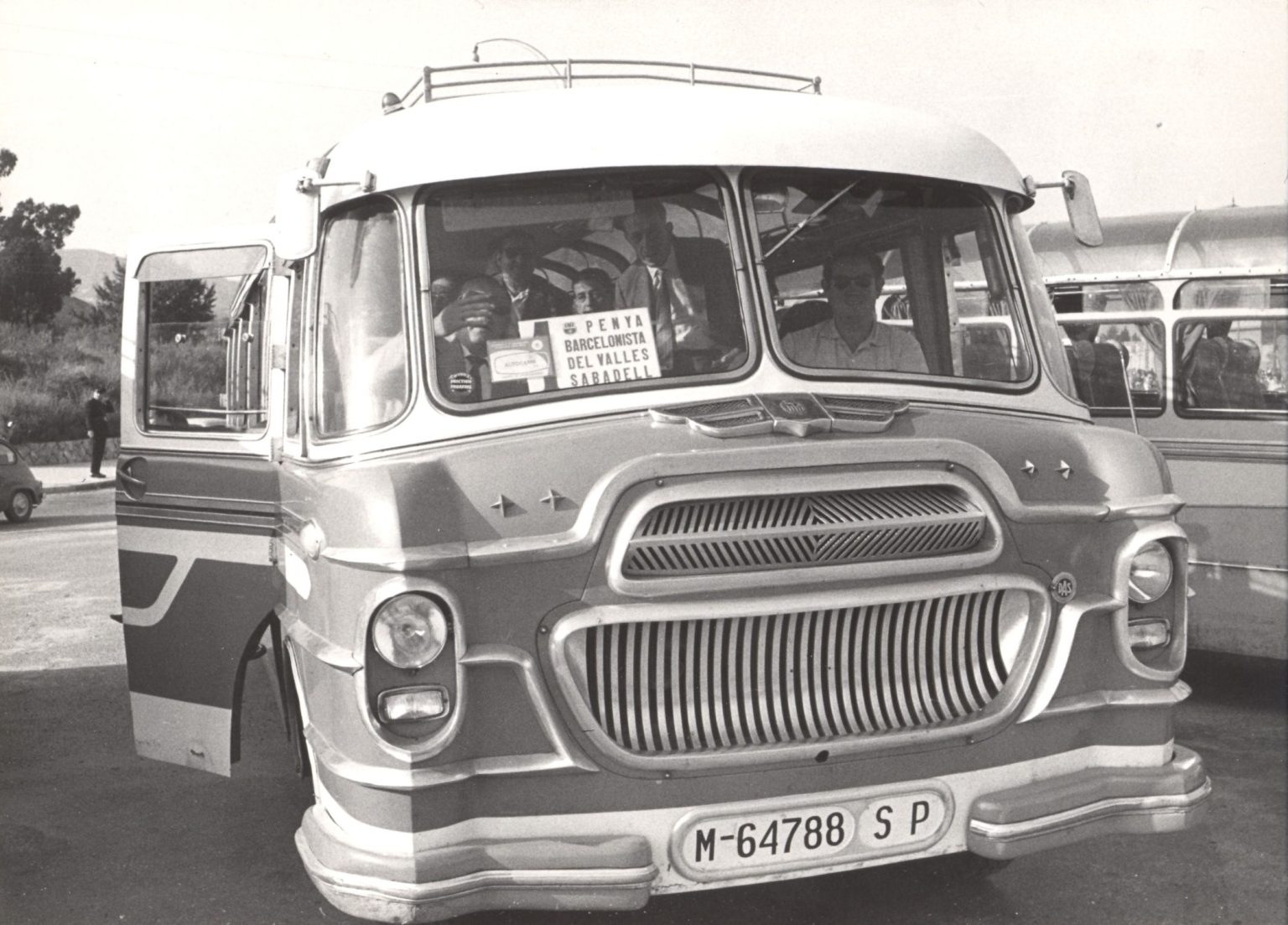The first area to experience the great boost that the Barça de les Cinc Copes and those intense years of the 1950s meant was the Vallès. We have already seen how other penyes were springing up in this area, many of them of a social nature, but without arousing any suspicion among the Francoist authorities. Their apparent aim was simply to organise coaches both to the Les Corts pitch and, later, to the Camp Nou. One of these penyes, the Penya Barcelonista del Vallès, came into being in 1958 in Sabadell.
The penya was founded by great men of the city at that time, mostly textile businessmen who were also keen to be part of the Centre d’Esports Sabadell. According to the penya ‘nowadays, all this has changed a lot’. However, the penya continues to be involved in the activities organized by the Federació de Penyes Barcelonistes del Vallès. Despite not having the same drive that made it great in its beginnings and advancing at a much more modest pace, it continues along a path that is now almost 70 years old.
The city of Sabadell
Sabadell is a city with attractions such as the ‘Torre de l’Aigua’ (Water Tower), Casa Duran, the Ripoll riverbed, the ‘Ermita de Sant Nicolau’ (Hermitage of Sant Nicolau) and the ‘Santuari de la Salut’ (Sanctuary of La Salut). As in many municipalities in the region, the “ganxet” beans are one of the most important culinary condiments. The main town festivity is held on the first weekend in September, while another local festivity is the Aplec de la Salut, which is held on the second Monday in May.
In terms of hiking, the penya points out that a good route is the typical one along the River Ripoll, reaching the Santuari de la Salut or l’Ermita de Sant Nicolau. “The Torrebonica area is also full of good paths for walking to reach Terrassa and/or Matadepera. Torrebonica is a free space between Sabadell and Terrassa. There is an old station there that is no longer in use; perhaps it could be called a ghost station. Its surroundings are full of mysteries, strange deaths, and legends. At some points, the area was known as the Death Stop, as many travellers left the train there to go to the sanatorium to be treated for tuberculosis. A black legend has always been created around these types of buildings”, the penya explains.






